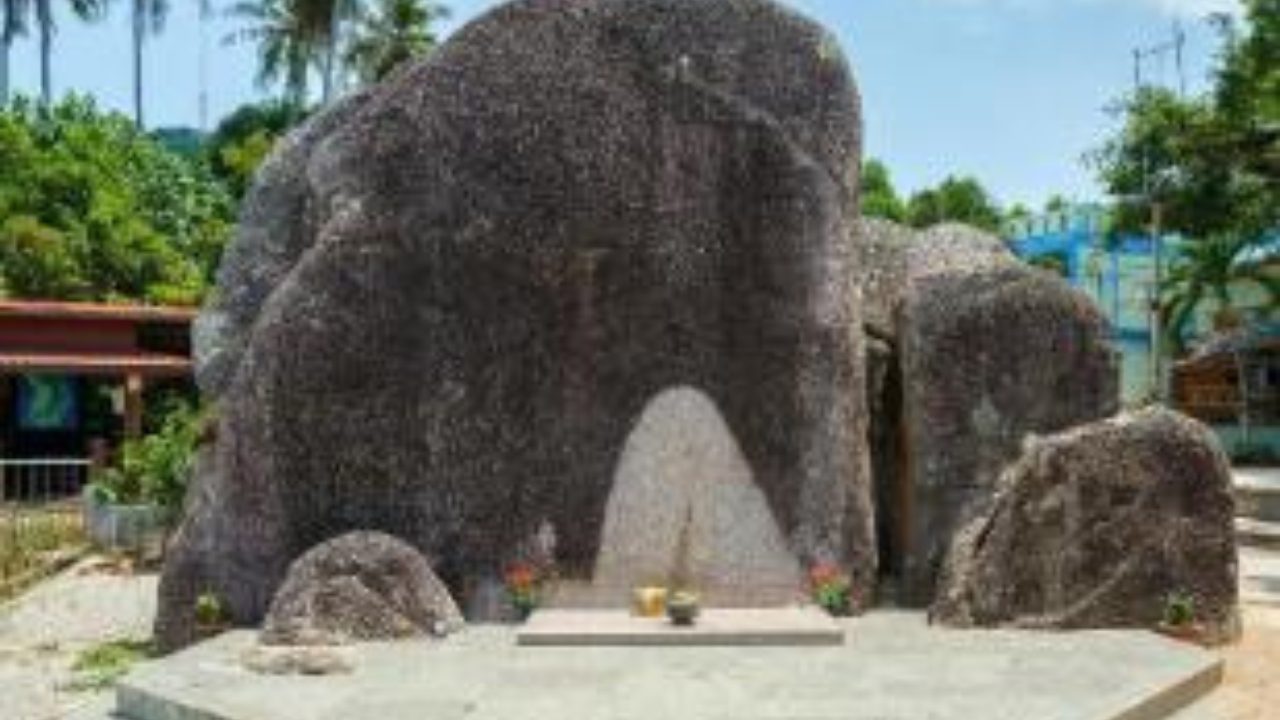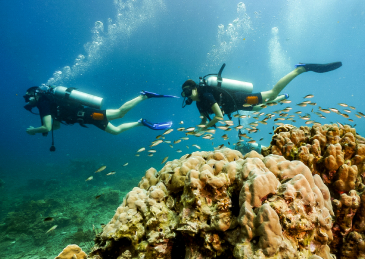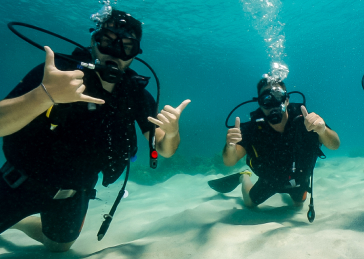Modified 10th June 2025
The History of Koh Tao: From Royal Prison to World-Class Diving Paradise
The history of Koh Tao reads like an adventure novel, filled with royal visits, political intrigue, pioneering settlers, and environmental transformation. This small island in the Gulf of Thailand has witnessed dramatic changes over nearly two centuries, evolving from an uninhabited turtle sanctuary to one of the world’s most celebrated diving destinations.
Understanding the history of Koh Tao provides crucial context for visitors who want to appreciate not just the island’s natural beauty, but also its cultural significance and the remarkable journey that shaped modern Thailand’s diving capital.
Early Recorded History: The 1820s Discovery
The earliest documented reference to what we now know as Koh Tao appears on maritime maps from the 1820s, where it was recorded as “Bardia” or “Pulo Bardia.” During this period, the history of Koh Tao begins with an uninhabited island surrounded by the pristine waters of the Gulf of Thailand, known primarily to fishermen from neighboring islands who would occasionally visit its abundant fishing grounds.
These early decades established the foundation for the history of Koh Tao as a place of natural abundance. The island’s strategic location in shipping lanes meant it appeared on navigational charts, but its small size and lack of fresh water kept it largely uninhabited. Fishermen would use it as a temporary shelter during storms or as a base for multi-day fishing expeditions.

Royal Recognition: King Chulalongkorn’s Historic 1899 Visit
One of the most significant chapters in the history of Koh Tao occurred in 1899 when King Chulalongkorn (Rama V) made a historic visit to the island. This royal recognition marked Koh Tao’s emergence from obscurity into documented Thai history.
The Royal Visit Timeline
The king visited Koh Tao during his tour of the southern provinces, recognizing the island’s strategic importance and natural beauty.
To commemorate his visit, the king’s monogram was carved into a large boulder at Jor Por Ror Bay, near what is now Sairee Beach.
This visit elevated Koh Tao’s status from a simple fishing outpost to a place of royal recognition, adding gravitas to its historical narrative.
The royal visit fundamentally changed the trajectory of the history of Koh Tao, giving it official recognition within the Thai kingdom. The carved monogram remains visible today and serves as a pilgrimage site for visitors interested in Thai royal history. This period established Koh Tao as more than just a remote island—it became a place worthy of royal attention.
Dark Chapter: Political Prison Era (1943-1944)
World War II Prison Period
Perhaps the most sobering chapter in the history of Koh Tao occurred during World War II, when the Thai government converted the island into a political prison. This lesser-known period reveals a darker side of the island’s past that contrasts sharply with its modern reputation as a tropical paradise.
1943: Prison Establishment – The Thai government selected Koh Tao’s remote location as ideal for detaining political prisoners. The island’s isolation made escape virtually impossible, while its small size allowed for easy monitoring of inmates.
1944: Closure and Abandonment – After just one year of operation, the prison was closed and Koh Tao was once again abandoned. The reasons for closure remain poorly documented, but it likely related to the high costs of maintaining such a remote facility and changing political circumstances as World War II neared its end.
This brief but significant period in the history of Koh Tao demonstrates how the island’s geographic advantages—isolation and small size—could serve different purposes depending on political circumstances. The prison era ended as abruptly as it began, leaving Koh Tao empty and ready for its next chapter.
The Founding Families: Settlement in 1947
The Pioneer Settlers
The modern history of Koh Tao truly begins in 1947 with the arrival of twin brothers Ta Euam and Ta Oh from nearby Koh Samui. These pioneering siblings recognized the island’s potential and became the first permanent residents, fundamentally changing the trajectory of Koh Tao’s development.
The early settlers quickly adapted to island life, establishing a self-sufficient community based on fishing and agriculture. They planted coconut groves that still exist today, cultivated vegetables for sustenance, and developed fishing techniques suited to the island’s unique marine environment.
Other families soon followed, drawn by reports of the island’s potential and the success of the initial settlers. This gradual population growth established the social foundation that would later support the island’s transformation into a tourist destination.

Transformation Era: Tourism Arrives (1980s-1990s)
The 1980s marked a pivotal turning point in the history of Koh Tao as the first adventurous travelers began discovering this hidden gem. Backpackers and exploration-minded tourists arrived via fishing boats, drawn by reports of untouched beaches and exceptional underwater biodiversity.
The 1980s: Early Tourism
During this decade, the first basic guesthouses appeared to accommodate the increasing number of visitors. Local families who had lived subsistence lifestyles for decades suddenly found new economic opportunities in tourism. The transformation wasn’t immediate, but it was steady and irreversible.
The 1990s: Diving Paradise Emerges
The 1990s saw the history of Koh Tao take a dramatic turn toward becoming a world-class diving destination. The island’s exceptional dive sites and year-round diving conditions attracted the first professional dive schools and instructors.
This period established the infrastructure that would support Koh Tao’s reputation as one of the world’s premier diving education centers. Improved transportation links, including regular ferry services and better roads for motorcycle access, made the island more accessible to international visitors.
Modern Era: Balancing Development and Conservation
Contemporary Challenges and Solutions
Today’s chapter in the history of Koh Tao focuses on sustainable development and environmental protection. The island’s popularity has created both opportunities and challenges, requiring careful balance between economic growth and ecological preservation.
Modern Koh Tao represents a unique blend of cultures and traditions. The community includes original Thai families, long-term expat residents, and international visitors who have chosen to make the island their home. This diversity creates a vibrant cultural scene that honors both the island’s heritage and its international character.
Understanding seasonal weather patterns y transportation options has become essential for visitors wanting to experience the island responsibly while contributing to its sustainable future.
Marine Life Conservation: Preserving Koh Tao’s Legacy
A crucial aspect of modern Koh Tao history involves protecting the diverse marine ecosystems that originally gave the island its name. Conservation efforts now focus on maintaining healthy coral reefs, protecting sea turtle nesting sites, and managing tourism impact on underwater environments.
These conservation initiatives represent the latest chapter in the history of Koh Tao, as the island community works to ensure that future generations can experience the same natural wonders that have defined the island’s character for centuries.
Become part of Koh Tao’s continuing story with Thailand’s most experienced dive center.
At La Bombona Diving, we’ve been witnessing and participating in the history of Koh Tao’s diving evolution for years. Our team combines deep respect for the island’s heritage with cutting-edge diving education.
- Learn from instructors who know Koh Tao’s diving history
- Visit historic dive sites with cultural significance
- Support sustainable tourism practices
- Experience world-class training in an iconic setting
- Join the legacy of thousands of certified divers
- Contribute to marine conservation efforts
Open Water Certification: ฿11,000 – All equipment included, no hidden fees
Start Your Diving Journey in Paradise4 ocean dives over 4 days | Professional instruction | Lifetime memories
Frequently Asked Questions About Koh Tao’s History
Bucea con LBD: tu puerta a la exploración submarina
Whether you’re a curious beginner or a seasoned pro, our school is your portal to the wonders of scuba diving. Join us into the world beneath the waves.
¿LISTO PARA EMPEZAR?
Consulta nuestros cursos de buceo en Koh Tao



